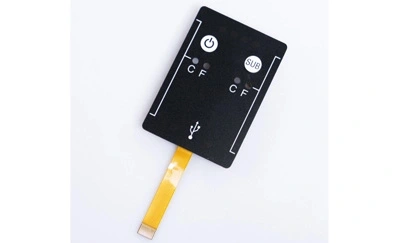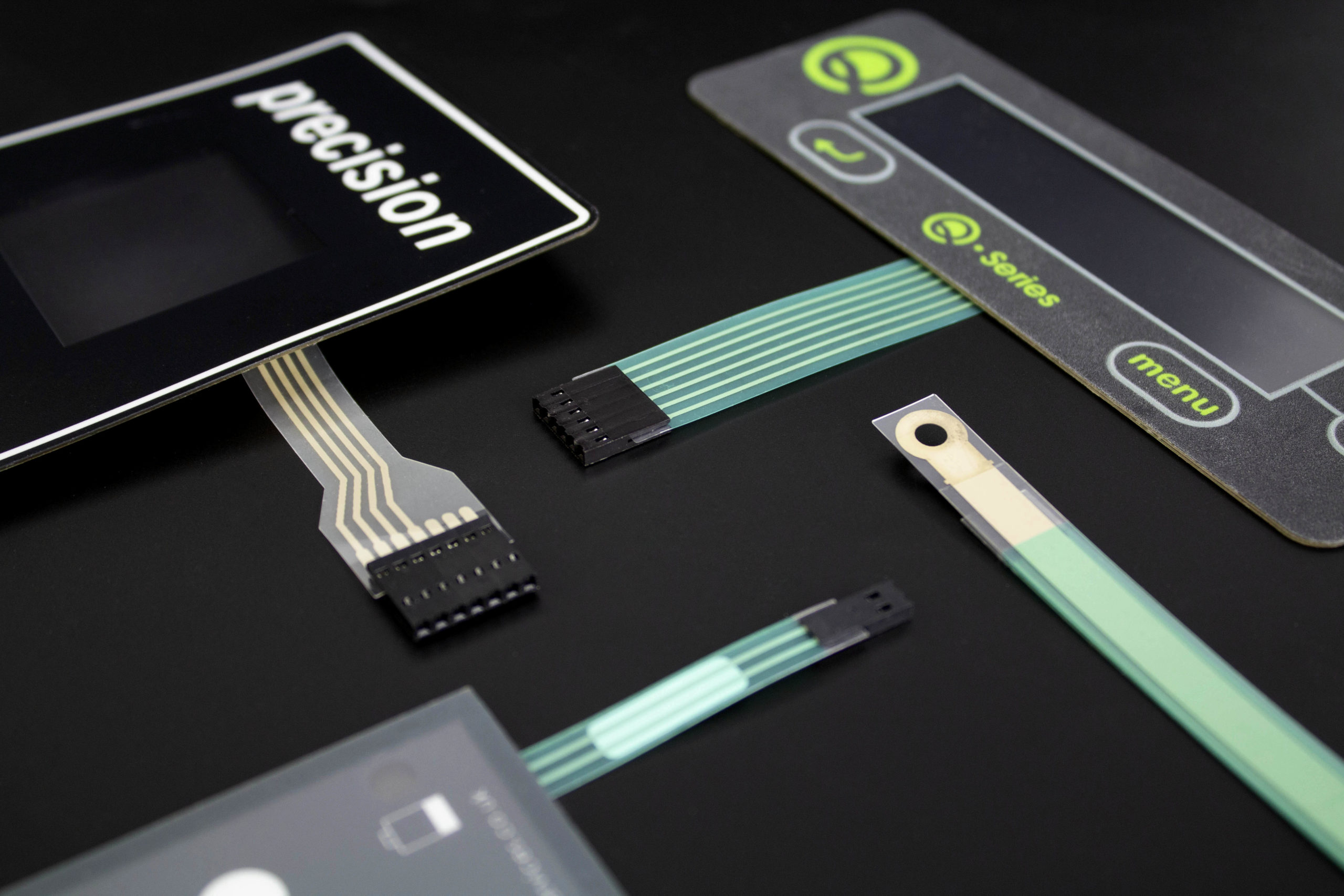Membrane switch in digital appliances: design considerations
Wiki Article
Understanding the Relevance of Membrane Layer Change in Modern Electronic Devices
Membrane layer switches are essential components in modern-day digital devices. They supply a mix of performance and layout that improves user communication. Their sturdy and light-weight nature makes them suitable for different applications. As industries evolve, the need for modification and progressed attributes expands. Understanding exactly how membrane layer changes add to technology exposes their relevance fit the future of electronic devices. What lies in advance for this modern technology?The Basics of Membrane Switch Over Technology
Although often overlooked, membrane layer switch technology plays an important duty in the contemporary electronics landscape - membrane switch. These tools, made up of several layers, serve as interface for different digital products, varying from family home appliances to clinical tools. A typical membrane button includes a graphic overlay, a spacer layer, and a circuit layer, which are carefully constructed to create a useful interface.When pressure is put on the overlay, the circuit layer is completed, permitting signals to be sent to the device. This modern technology is known for its adaptability, allowing modification in form, layout, and functionality to meet specific user requirements. In addition, membrane layer buttons are thin and light-weight, making them ideal for applications where area is a premium. Their toughness and resistance to ecological elements even more improve their allure, guaranteeing they can withstand rough conditions while preserving functionality. On the whole, membrane layer button technology is important to producing reliable and easy to use digital tools
Secret Benefits of Membrane Layer Switches Over
Membrane switches deal several essential advantages that make them a preferred choice in different electronic applications. Their layout permits a portable form element, allowing makers to develop smooth and lightweight devices. Additionally, membrane layer buttons are immune to dirt, moisture, and chemicals, which improves their toughness and longevity in requiring environments. The responsive comments given by these switches can improve customer experience, making them intuitive and easy to operate.Furthermore, membrane layer switches can be personalized with diverse graphics and colors, allowing for special branding opportunities. The manufacturing process is normally economical, particularly for high-volume manufacturing, as it lowers assembly time and streamlines style. Lastly, membrane layer changes call for very little upkeep, contributing to reduced general operational costs. These benefits underscore their expanding appeal in modern-day electronics, where reliability and user-friendly user interfaces are essential.
Applications Across Various Industries
The adaptability of membrane changes allows their widespread fostering throughout different industries. In the medical field, they are typically utilized in analysis devices and individual monitoring systems, supplying a resilient user interface immune to pollutants. The automotive industry uses membrane layer switches for control panel controls, improving user experience with streamlined styles that withstand severe problems. In customer electronics, they work as control board for devices such as microwaves and coffee manufacturers, providing a straightforward interface that is simple to clean. The aerospace industry employs membrane switches in cabin controls, where dependability and space performance are vital. In addition, the commercial market leverages these switches in equipment and control systems to ensure robust operation in requiring settings. This broad variety of applications underscores the versatility of membrane layer buttons, making them indispensable parts in boosting functionality and user communication across diverse technological landscapes.Personalization and Style Flexibility

Future Trends in Membrane Layer Change Development
Emerging patterns in membrane button development suggest a growing emphasis on boosted functionality and integration with clever innovations. As consumer need for more advanced digital devices boosts, producers are concentrating on producing membrane layer switches over that not only serve standard functional roles but additionally include features like touch level of sensitivity, backlighting, and haptic feedback.Furthermore, innovations in materials are expected to enhance longevity and environmental resistance, making membrane layer switches over appropriate for varied applications in industries such as healthcare, vehicle, and consumer electronic devices. The assimilation of capacitive touch technology is likely to end up being much more widespread, permitting for sleeker designs and enhanced user interfaces. membrane switch.Additionally, the surge of the Internet of Things (IoT) is motivating the growth of membrane switches over that can communicate wirelessly with various other gadgets, enhancing interconnectivity. Overall, the future of membrane layer button modern technology appears encouraging, driven by advancement and the quest of straightforward servicesOften Asked Inquiries
Just How Do Membrane Changes Compare to Conventional Mechanical Switches?
Membrane layer switches, being more space-efficient and providing a sleek design, comparison with typical mechanical buttons that give responsive responses. The former frequently feature adjustable graphics, while the latter usually assure sturdiness and reliability in various applications.What Products Are Commonly Utilized in Membrane Layer Switch Over Production?
Membrane layer buttons are commonly created making use of products such as polyester, polycarbonate, and printed conductive inks. These materials give responsiveness, resilience, and adaptability, making them suitable for numerous applications in next page digital gadgets and interface.Can Membrane Switches Over Be Fixed or Recycled?
Membrane layer switches can usually be repaired, particularly if minor issues develop, such as glue failure or surface damage. Nevertheless, complete reuse is generally restricted as a result of use and possible destruction of products with time.
How Do Environmental Elements Influence Membrane Switch Over Efficiency?
Environmental elements, such as exposure, moisture, and temperature browse around this web-site level to chemicals, considerably affect membrane switch performance. Severe conditions can cause destruction, impacting responsiveness and durability, ultimately compromising the functionality of the gadget in various applications.What Is the Common Lifespan of a Membrane Layer Switch?
The typical lifespan of a membrane button normally varies from 1 to 5 million actuations, depending on aspects such as use regularity, ecological problems, and the materials utilized in manufacturing, impacting longevity and efficiency longevity. A typical membrane button is composed of a visuals overlay, a spacer layer, and a circuit layer, which are thoroughly put together to create a practical interface - membrane switch.When stress is used to the overlay, the circuit layer is finished, permitting signals to be transmitted to the gadget. The tactile important link feedback offered by these switches can enhance user experience, making them user-friendly and easy to operate.Furthermore, membrane layer buttons can be tailored with varied graphics and colors, allowing for unique branding chances. As consumer need for much more innovative digital devices boosts, manufacturers are concentrating on developing membrane layer changes that not only offer standard operational functions however additionally integrate functions like touch sensitivity, backlighting, and haptic feedback.Furthermore, innovations in products are anticipated to improve toughness and environmental resistance, making membrane switches over ideal for diverse applications in markets such as medical care, automotive, and consumer electronics. The assimilation of capacitive touch technology is most likely to come to be extra prevalent, enabling for sleeker styles and boosted user interfaces.Additionally, the rise of the Internet of Points (IoT) is prompting the advancement of membrane switches that can connect wirelessly with various other devices, enhancing interconnectivity. Membrane switches, being more space-efficient and supplying a smooth layout, comparison with standard mechanical switches that supply responsive responsesReport this wiki page